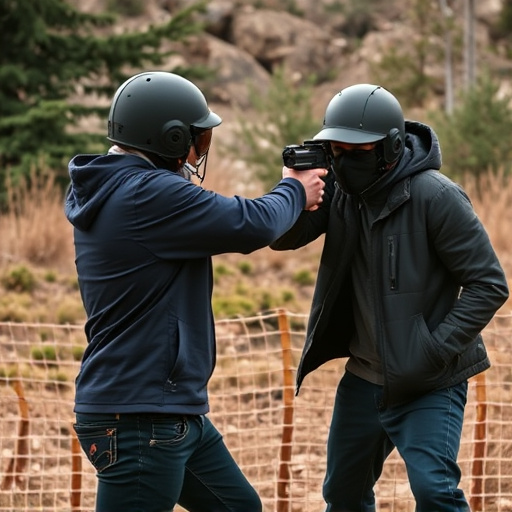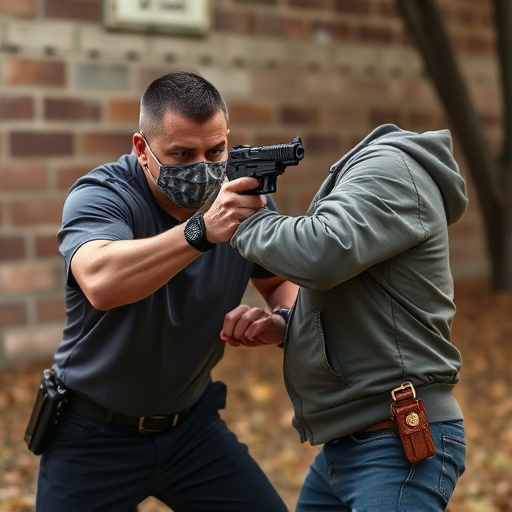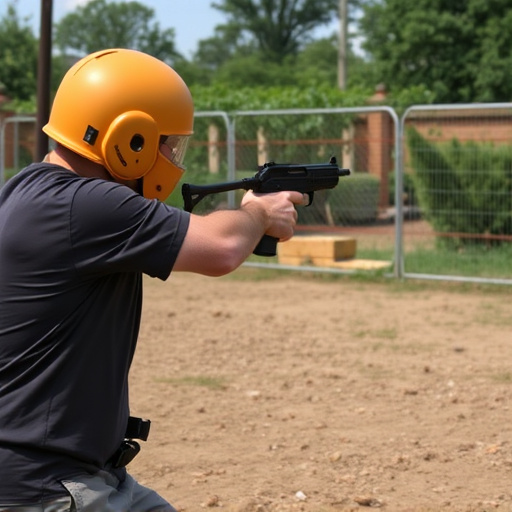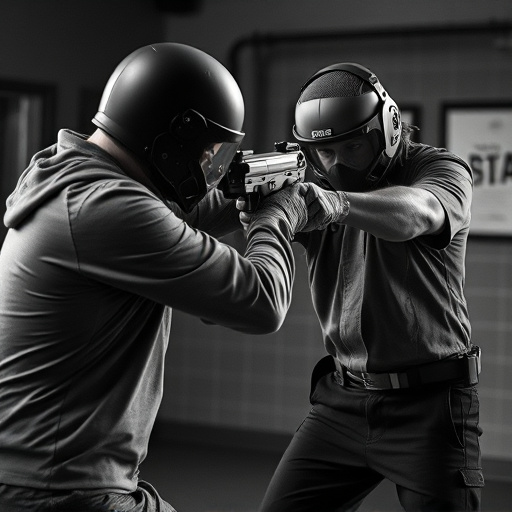Selecting an affordable stun gun for self-defense requires understanding amperage (watts) to effectively disrupt nerve impulses and cause pain without severe injury. Ideal amperage ranges from 40,000 to 150,000 A, balancing power and safety; staying within this range ensures legal compliance and effective personal defense while avoiding electrical risks or legal issues regarding affordable stun guns.
Electrical shock weapons, or stun guns, have emerged as powerful tools for personal safety. This article delves into the science behind stun gun amperage, exploring how different levels of electrical current can disable an attacker temporarily. We discuss affordable options available to individuals seeking protection, highlighting effective amperage ranges for self-defense and legal considerations for responsible ownership. By understanding these key factors, users can make informed decisions when choosing an affordable stun gun for personal safety.
- Understanding Stun Gun Amperage: The Science Behind Shock
- Affordable Options for Personal Safety: Stun Guns in Reach
- Amperage Range: What Levels Are Effective for Self-Defense?
- Legal Considerations: Regulations and Responsible Ownership
Understanding Stun Gun Amperage: The Science Behind Shock

Understanding Stun Gun Amperage: The Science Behind Shock
When considering affordable stun guns for self-defense, understanding the science behind their shock delivery is paramount. A stun gun’s effectiveness relies on its ability to disrupt muscular control through a high electrical current. This current, typically measured in amperes (A), flows through the body when the device makes contact with the attacker. The amperage needed to stun varies depending on factors like the device’s design, battery power, and the specific point of contact on the body.
For most affordable stun guns, a safe yet powerful shock is achieved with amperages ranging from 40,000 to 150,000 A. This range ensures that the device is capable of immobilizing an assailant without causing serious harm. The science behind it involves disrupting nerve impulses, temporarily paralyzing muscles, and inducing intense pain. By understanding these fundamentals, users can make informed decisions when choosing a stun gun for self-defense, ensuring they get the most effective protection at an affordable price.
Affordable Options for Personal Safety: Stun Guns in Reach

For those seeking affordable options for personal safety, stun guns have emerged as a popular and effective choice. These non-lethal weapons deliver a powerful electric shock, providing users with a crucial tool to deter and escape potential threats. The market offers a wide range of stun guns at varying price points, catering to different budgets while still ensuring effectiveness and reliability.
Affordable stun guns for self-defense need not compromise on quality or performance. Many reputable manufacturers produce high-quality devices that are both compact and powerful, making them easily accessible for individuals who want to be prepared in case of emergencies. With proper research and consideration, one can find a suitable stun gun that offers peace of mind without breaking the bank.
Amperage Range: What Levels Are Effective for Self-Defense?

When considering an affordable stun gun for self-defense, understanding amperage is key to effective protection. Amperage, measured in amps, represents the flow of electric current and is a critical factor in determining the impact of a stun device. For self-defense purposes, stun guns are typically designed with amperage ranging from 40,000 to 150,000 amps. This range ensures a powerful enough shock to disable an assailant temporarily, allowing you to escape or seek help.
While higher amperage levels (over 150,000) can be more effective in causing severe muscle contractions and disorienting the target, they may also increase the risk of electrical fires or other hazards if not properly designed and used. For most individuals seeking an affordable stun gun for personal safety, a device with amperage between 40,000 to 120,000 is generally sufficient to deter and incapacitate an attacker, making it a practical and safe choice for self-defense.
Legal Considerations: Regulations and Responsible Ownership

When considering an electrical shock weapon, such as a stun gun, it’s crucial to understand the legal landscape surrounding their ownership and use. Regulations vary greatly from region to region, so responsible owners must stay informed about local laws. In many areas, stun guns are classified as less-lethal weapons and can be legally purchased and carried by authorized individuals for self-defense purposes. However, strict guidelines often include age restrictions, registration requirements, and limits on the device’s amperage.
For those seeking affordable stun guns for self-defense, understanding these legal considerations is paramount. It’s essential to choose devices that comply with local regulations to avoid legal repercussions. Responsible ownership includes adhering to use guidelines, keeping the weapon in a secure location, and ensuring proper training in its safe deployment. This not only protects the owner but also contributes to a responsible and regulated environment for everyone.
In conclusion, understanding the amperage of electrical shock weapons is key to effective personal safety. With affordable options readily available, individuals can empower themselves against potential threats. The right stun gun with an appropriate amperage range offers a non-lethal yet powerful defense mechanism. However, it’s crucial to stay informed about legal considerations and responsible ownership practices when carrying such devices. Investing in an affordable stun gun for self-defense is a proactive step towards ensuring safety and peace of mind.
